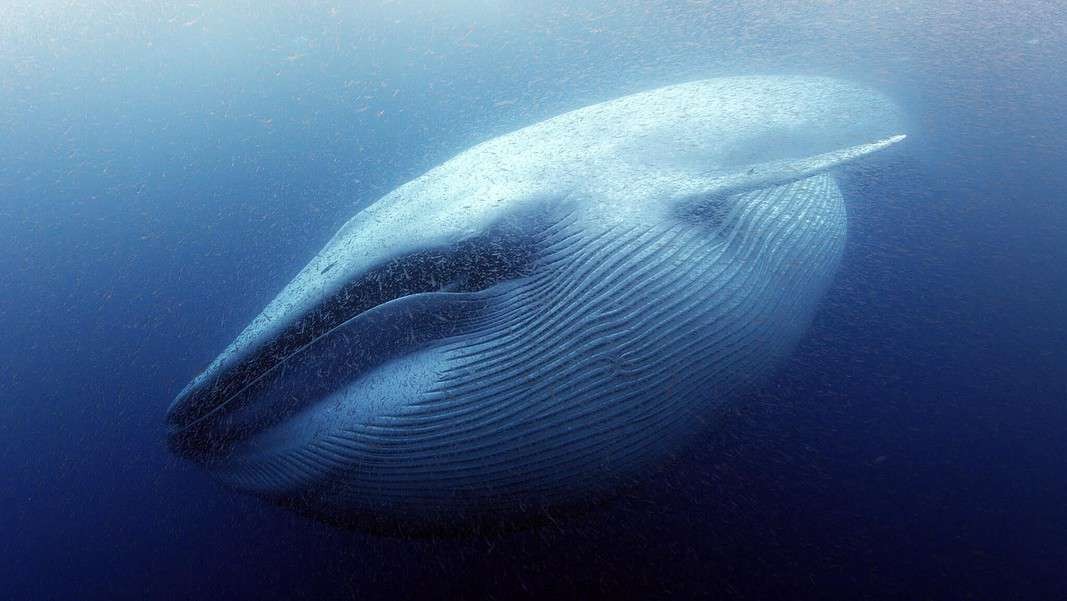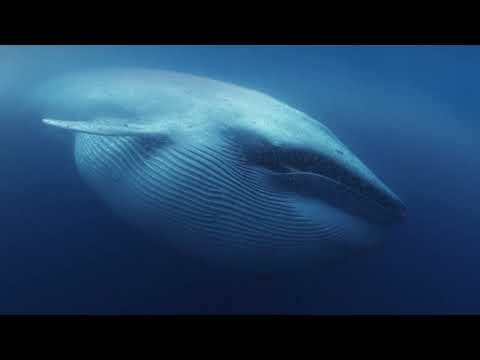Imagine a blue whale feeding on a krill swarm, driven from the depths by opalescent squid. The surface conditions are calm, and the ocean lures you with its luminous transparency allowing your gaze to stretch its massive body length. And what if you knew that each element of this magical moment comes together and happens every 15 years? It’s a rare occurrence.
Howard and Michele Hall reveal ocean secrets in their new nature documentary for IMAX® and giant screen theaters, Secrets of The Sea. The film features unique animal behaviors and symbiotic relationships of over 70 marine species never seen before on the giant screen. Spectacular visuals are filmed in 16 locations around the blue planet, including Indonesia, The Philippines, Tahiti, California, Hawaii, and more. Secrets of The Sea showcases the beauty and majesty of marine biodiversity and how different species work together, which is vital for a healthy ocean. The Halls divulge details about the film, the evolution of technology used, and some of their behind-the-scenes and storytelling tips.
“We are revealing secrets,” says producer Michele Hall. “We are revealing behavior that might be hidden if you didn’t take the time to really look.”
The Halls specialize in capturing marine animal behaviors. While many nature documentaries emphasize dramatic scenes of predation, animals cooperate more underwater. Director and cinematographer Howard Hall affirms, “It’s interesting that the true relationship between species underwater is symbiotic. It’s not predatory. It certainly happens. Fish have to eat. But what holds the ocean together is the symbiotic relationships between species.” They then consulted scientists to corroborate that this teamwork was occurring. And it is.
A symbiotic relationship occurs between two species that each benefit from working together. The classic seafaring example is the boisterous clownfish living in the stinging tentacles of the anemone. The fish is protected with food and shelter and, in return, helps the anemone by defending it from predators and parasites and fertilizing and oxygenating the water.
This film is about the “interrelationships between animals in the ocean and how those interrelationships make the whole ecosystem work,” says Howard. A mother humpback whale is nursing her young. Dolphins are playing with bits of kelp. Cleaning behaviors between shrimp and eels or remora and dugongs.
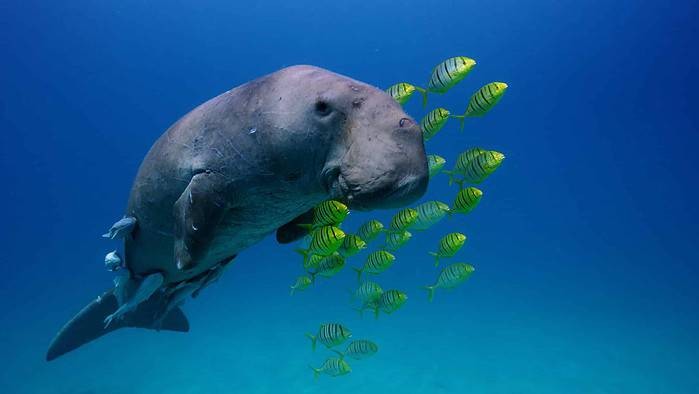
Photo Credit: MacGillivray Freeman Films/Howard Hall
Michele emphasizes, “If one of those species disappears, then the other one’s livelihood and life is in jeopardy. And that can lead to the breakdown of life on the reef.”
And this includes the species Homo sapiens – us!
Typically, their films focus on animals and their environments and do not have people. In Secrets, they link a human factor, which is necessary as we are all connected, and healthy biodiversity is vital for a healthy ocean.
“One of the interesting things that I’ve come to realize is that in recent years, those symbiotic relationships have extended to divers,” Howard says. The film highlights several interactions, such as Michele imitating a fish and allowing shrimp to clean her. Or a California Sea Lion is approaching her for a closer look. Or manta rays in Socorro, Mexico, that divers interact with by blowing bubbles and snapping photos. This latter interaction is a valuable example of how an inter-species relationship is crucial for survival; essentially, it offers protection by the presence of divers where, for example, fishing may occur instead.
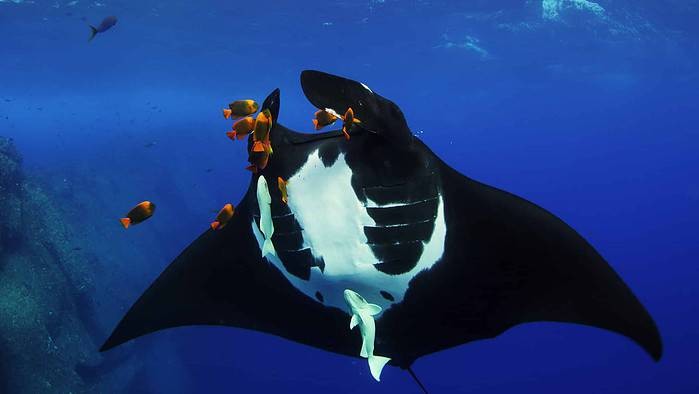
Photo Credit: MacGillivray Freeman Films/Howard Hall
Many species and habitats in the sea are in danger. While the film does not focus on destruction and threatened status, it invites an appreciation and, hopefully, a love for the ocean and a desire to protect it.
“Our primary job is to build a sense of value for these environments and these animals so that people, when they learn about the problems that marine communities face, are more willing to do something about it,” Howard hopefully states. When you sit back and enjoy the stunning imagery that Howard has a reputation for capturing, S.O.S. (Secrets of the Sea) echoes an SOS cry for help. “If we don’t pay attention to what’s happening in our oceans around the world, they will become more and more in peril.”
In the theme of symbiosis, a superb team worked to bring Secrets to life. Howard and Michele Hall are the aquatic film dynamos behind Howard Hall Productions, a marine wildlife and conservation production company specializing in films for television and large format theater. They are internationally applauded for their highly successful underwater IMAX features. The duo has worked together for over three decades directing and producing numerous IMAX features and hundreds of films for television broadcast, earning them a combined seven Emmy® Awards. They are both recognized in the diving world as inductees to the International Scuba Diving Hall of Fame (and Michele to the Women Divers Hall of Fame), recipients of the Academy of Underwater Arts and Sciences’ NOGI Award, and honorees of the Hans Hass Award, to name a few.
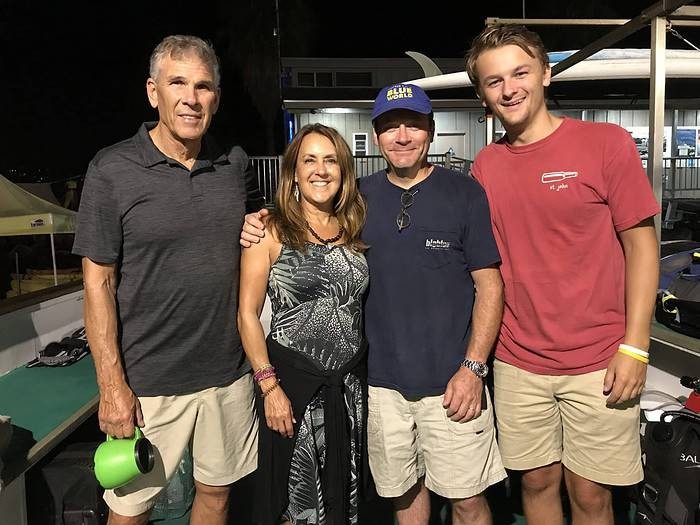
Photo Credit: MacGillivray Freeman Films/Michele Hall
The film is a co-production with Oceanic Research Group, a non-profit educational organization dedicated to ocean conservation. Its founder, Jonathan Bird, is the host of the Emmy® Award-winning series Jonathan Bird’s Blue World. Howard and Jonathan captured the majority of the footage. Scripts and edits were passed back and forth, collaborating until they were happy with the product.
The story would not be complete without an inviting narrative voice and accompanying music. Joelle Carter, Critics’ Choice Award nominee for her television role in Justified on FX, narrates. The Halls say she offers a “touch of joy and magic to the film.” Alan Williams, an award-winning composer and conductor with over 100 movie and television credits scored the film with the 70-piece FAME’S Skopje Orchestra in Macedonia.
The Halls reunited with MacGillivray Freeman Films for distribution. They are the world’s leading independent producer and distributor of giant screen films, with over 45 films and two Academy Award nominations. Another recent release, Ancient Caves, produced and directed by Jonathan Bird, premiered the week the pandemic shut down the world, though is now available for viewing, too.
So how do the Halls approach their filmmaking? What is the secret to their approach? Story! As Michele affectionately notes, “Howard’s talent shines being able to tell the story.”
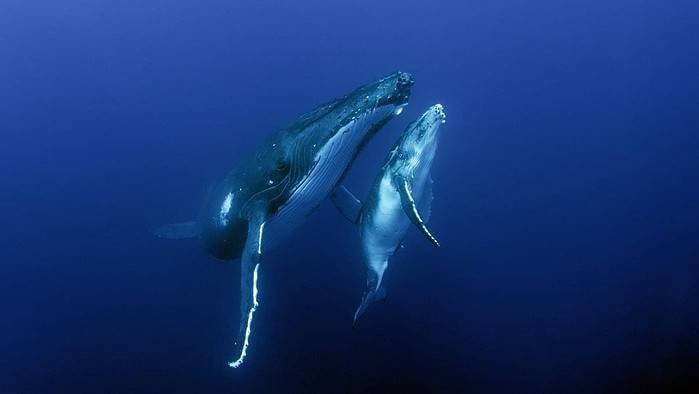
Photo Credit: MacGillivray Freeman Films/Howard Hall
Howard discloses that he starts with the location. From there, he researches the animals and their predictable behaviors. He crafts a script writing every scene, the desired sequences, and all the shots, including the scenic and transitional ones that make a story. “Of course, when you go underwater, you’ll immediately find that animals don’t follow the script.” Something unpredictable may happen, and that’s “the magic stuff.”
Getting those behavior sequences takes a lot of “saturated time.” They spend around 100 days in the field, which results in over 400 subaqueous hours for each film. But it is time well spent since Howard loves the water and learning new ocean obscurities, even after decades. With almost 3,000 rebreather hours logged since 1989 (that does not include time on SCUBA or snorkel!), he has dedicated the bottom time to witnessing some magical secrets!
Previous IMAX movies were captured in 70mm film with gigantic cameras. The film would be full in three minutes, long before a SCUBA cylinder. The Halls 3D films for IMAX (Into the Deep, Deep Sea, Under the Sea) were shot in a camera that weighed 1,300 pounds underwater. Each roll costs about $7,000 to process the footage. Multiply that by two since they were shot in 3D. Clearly, that is an extraordinarily expensive and laborious format.
Howard shares a time when he was in the ocean filming, and a crewmember alerted him of a blue whale a half mile away. Howard had four guys assisting in moving the half-ton camera underwater. Spoiler alert: they did not make it to the whale – that time.
As camera gear has evolved, the ability to capture footage for IMAX is drastically enhanced. Now the film lasts 30 minutes, costs nothing to develop since it is digital, and the gear is 40 pounds soaking wet.
Secrets is the first IMAX production they filmed digitally. With smaller cameras, they could capture animal behaviors and big marine life never before seen on the giant screen.
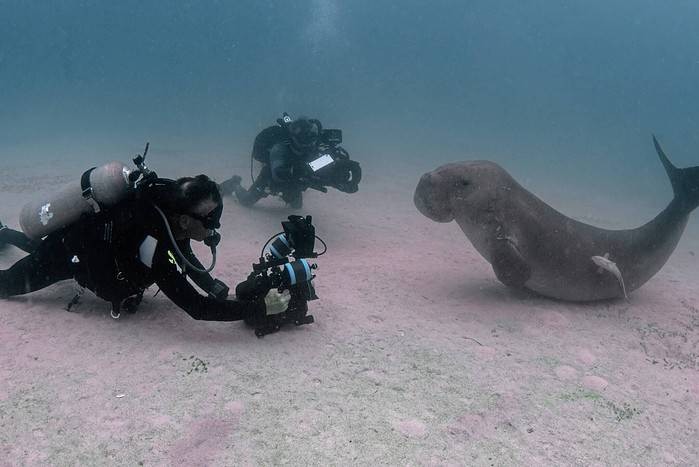
For IMAX, there are two primary formats: IMAX Dome, which surrounds you with the picture in 2D. And IMAX 3D is shown on a flat screen with special glasses, which immerses one pretty dramatically into the film.
“Secrets of the Sea works extraordinarily well in both formats,” says Howard. “Jonathan and I wanted to make a film that was ‘dome friendly’ from the start. We shot the image composed for the IMAX Dome. And if you do that, then the film will also work just fine in 3D.”
The thrill of IMAX theaters is that one is seemingly immersed in the scene. The screen is 80 feet high and ten times sharper than a conventional film. Its curvature puts the audience even closer to the action. The surround sound accentuates each sound. Then with the 3D experience, it feels like it is all around you, and in that instance, you are beneath the sea.
“Secrets of The Sea, in my opinion, is the best dome film I’ve ever seen. I mean, it’s just spectacular on the dome. And there are new projectors in IMAX theaters that are laser projectors, so the image can be extremely bright and sharp.” Howard continues, “Seeing your images on a big screen is really rewarding. And IMAX is the biggest screen there is. When you see your images projected on a screen that’s 80 feet high and 100 feet wide, that’s fun, and I love watching the audience reaction.”
When Into the Deep, the first ever underwater IMAX 3D feature, was released, a screening was hosted for Steven Spielberg. During a scene of the camera moving through a kelp forest, it was noticed that Mr. Spielberg reached his hand out to push the kelp away. How’s that for an immersive audience reaction?!
Michele beams, “That’s the magic of giant screen films … you really feel like you’re in there without having to get wet or cold or travel.”
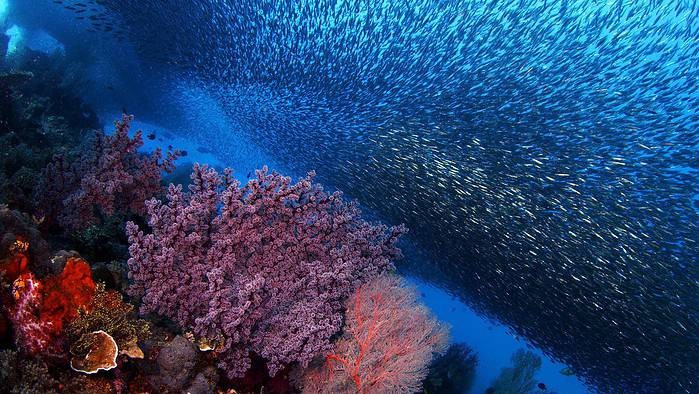
Photo Credit: MacGillivray Freeman Films/Howard Hall
While many of us jump at the chance to travel, get wet, and, ok well, maybe not be cold, most may never have the opportunity to visit these places or witness such animal behaviors. “We can bring to general audiences something that they may never have the opportunity to experience firsthand,” proudly claims Michele.
And who doesn’t love a good secret? Especially one that is revealed on a screen that is 100 feet wide!
Officially released on World’s Oceans Day, June 28, 2022, Secrets of The Sea is now playing in IMAX® and giant screen theaters worldwide.
To learn more, find showings, or request near you, visit secretsoftheseamovie.com

